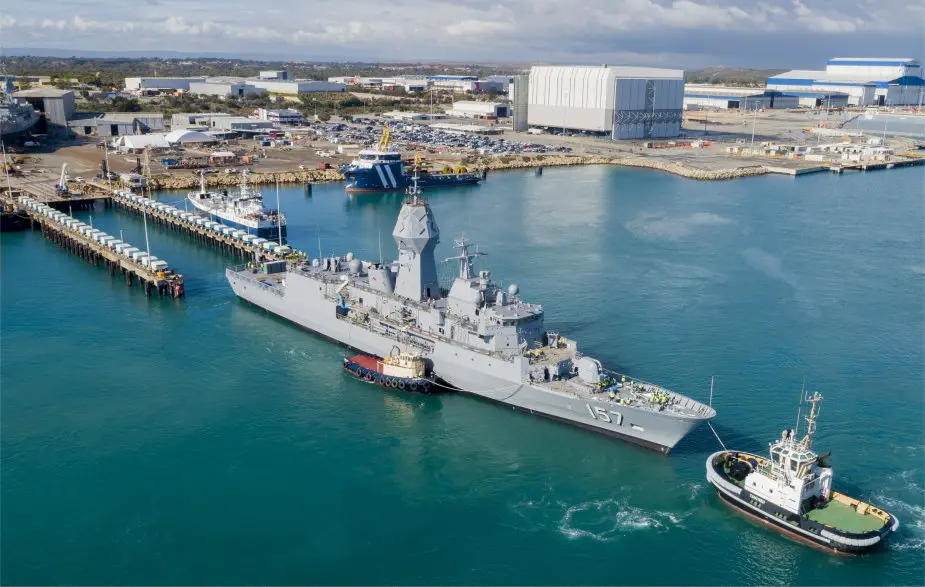Breaking news
Royal Australian Navy Anzac-class HMAS Perth back in the water.
According to information published by the Australian Department of Defense on July 2, 2021, Anzac-class frigate HMAS Perth was back in the water after upgrades.
Follow Navy Recognition on Google News at this link
 Anzac-class frigate HMAS Perth (Picture source: Australian Department of Defense)
Anzac-class frigate HMAS Perth (Picture source: Australian Department of Defense)
She was lowered out of the dry dock at the Australian Marine Complex at Henderson, Western Australia, after completion of upgrades to her radar capabilities, communications systems and crew-habitable areas, which are a major part of the Anzac Midlife Capability Assurance Program.
Commanding Officer Perth Commander Anthony Nagle said the complexity of the manoeuvres to get her back in the water required precise coordination.
With the motto ‘Fight and Flourish’, the long-range frigate is capable of air defence, surface and undersea warfare, surveillance, reconnaissance and interdiction, and is home-ported at Garden Island, Rockingham, Western Australia.
HMAS Perth (FFH 157) is an Anzac-class frigate of the Royal Australian Navy (RAN). The last ship of the class to be completed, she was built by Tenix Defence and commissioned into the RAN in 2006.
The Anzacs are based on Blohm + Voss' MEKO 200 PN (or Vasco da Gama class) frigates, modified to meet Australian and New Zealand specifications and maximise the use of locally built equipment.
Each frigate has a 3,600-tonne (3,500-long-ton; 4,000-short-ton) full load displacement. The ships are 109 metres (358 ft) long at the waterline, and 118 metres (387 ft) long overall, with a beam of 14.8 metres (49 ft), and a full load draught of 4.35 metres (14.3 ft). A Combined Diesel or Gas (CODOG) propulsion machinery layout is used, with a single, 30,172-horsepower (22,499 kW) General Electric LM2500-30 gas turbine and two 8,840-horsepower (6,590 kW) MTU 12V1163 TB83 diesel engines driving the ship's two controllable-pitch propellers.
Maximum speed is 27 knots (50 km/h; 31 mph), and maximum range is over 6,000 nautical miles (11,000 km; 6,900 mi) at 18 knots (33 km/h; 21 mph); about 50% greater than other MEKO 200 designs.





























